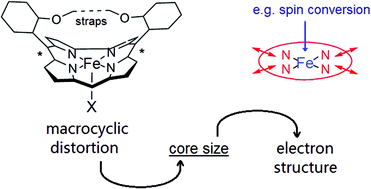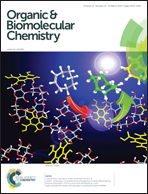Fractional transfer of a free unpaired electron to overcome energy barriers in the formation of Fe4+ from Fe3+ during the core contraction of macrocycles: implication for heme distortion†
Abstract
The free unpaired electron in Fe3+ ions cannot be directly removed, and needs a transfer pathway with at least four steps to overcome the high energy barriers to form Fe4+ ions. Fine changes in the electronic structure of Fe3+ ions on spin conversion were identified through a deeper analysis of the diffraction, spectral and electrochemical data for six non-planar iron porphyrins. Fe3+ ions can form four d electron tautomers as the compression of the central ion is increased. This indicates that the Fe3+ ion undergoes a multistep electron transfer where the total energy gap of electron transfer is split into several smaller gaps to form high-valent Fe4+ ions. We find that the interchange of these four electron tautomers is clearly related to the core size of the macrocycle in the current series. The large energy barrier to produce iron(IV) complexes is overcome through a gradient effect of multiple energy levels. In addition, a possible porphyrin Fe3+˙ radical may be formed from its stable isoelectronic form, porphyrin Fe3+, under strong core contraction. These results indicate the important role of heme distortion in its catalytic oxidation functions.


 Please wait while we load your content...
Please wait while we load your content...